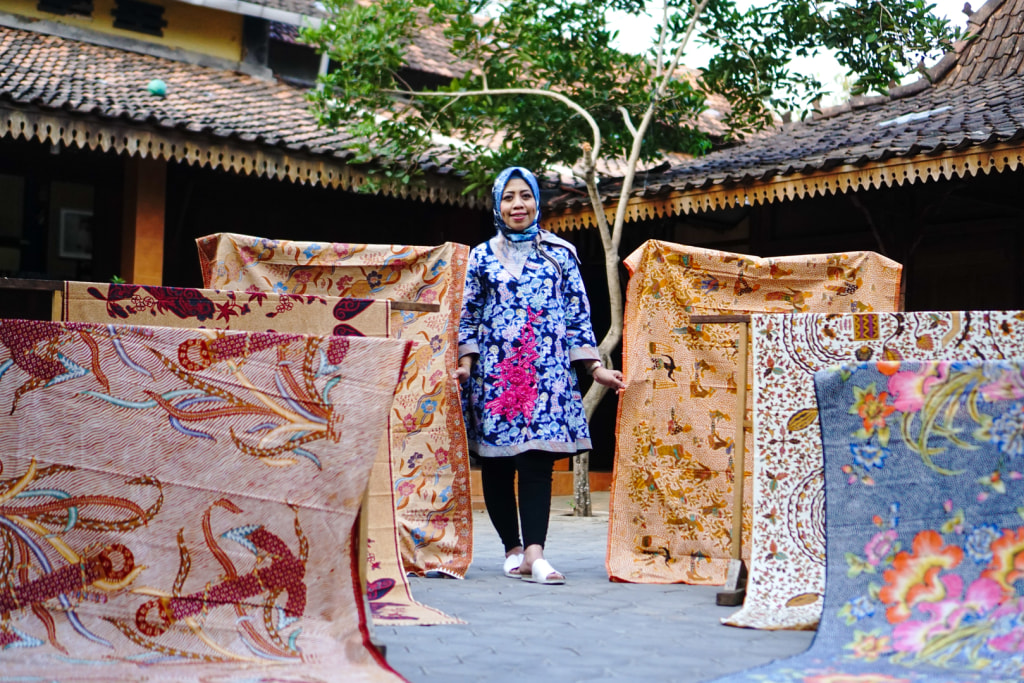
Pertamina's Fostered Batik Nusantara Partners Becomes the Pride of the Regions and Go International
Jakarta, November 7, 2021 – PT Pertamina (Persero) supports all efforts to preserve the national cultural heritage. One of them is batik. Since 1993, Pertamina has fostered more than 270 batik artisans' MSEs through the Micro Small Business Funding Program (PUMK). National Batik Month become the momentum for MSE's coaching activities MSEs.
Acting Vice President of Corporate Communications of Pertamina, Heppy Wulansari, explained that Pertamina provided capital loan assistance. In addition, Pertamina also improves their ability to compete. "We provide several programs, which consist of upskilling in finance, marketing, promotion, and other activities related to increasing the productivity of fostered partners," she said.
As a result, some fostered partners have succeeded in developing and upgrading. It starts from increasing turnover, production capacity, increasing the number of employees, to expanding marketing. Not only in the country but to penetrate several global markets. "The various types of Nusantara batik have their respective appeals and have the potential to go global," she said.
From Sumatra, for example, there is a Batik Medan Azzahra MSE owned by Herleni. The business located in Medan, North Sumatra, produces various batik motifs, specifically Medan motifs. These Medan batik motifs have been developed by business owners, such as the Medan Grand Mosque, Maimun Palace, and Durian motifs. For people who are interested in seeing the collection, you can go to social media @batikmedanazzahra.
The land of Java or known as the paradise of batik because almost every region has its batik patterns and motifs. One of them is Kudus batik. Yuli Astuti is one of Pertamina's fostered partners who produce it. The owner of the Muria Batik Kudus studio started herbatik career in 2005. Yuli is not an arbitrary batik. She is known as a figure who deserves to be called a conservation hero of Kudus batik. Her various Kudus batik motifs can be seen on social media @muriabatik. Yuli has also explored local, national, and international markets, including Malaysia, Brunei Darussalam, Singapore, and China.
Sri Sunarti, the owner of the Iwatik business, is not young anymore. She started her business using the fabric that is owned. Batik works with typical motifs of Balikpapan or Kalimantan can be made into one sheet. This motif turned out to be in great demand by the public, including government agencies. The batik motifs offered are Karang Munting, Arch of East Kalimantan, Cemara and other motifs.
Not to forget, from Eastern Indonesia, there is Kristina Ifaryani. The owner of Citra Batik developed batik motifs typical of Sentani, Jayapura, Merauke, Asmat, Wamena, and a mixture of cultures throughout Papua. Papuan batik motifs surround natural conditions. It includes flora and fauna as well as Tifa musical instruments and the Honai traditional house.
With the independence of batik artisans, Heppy hopes that batik can be widely known again, especially to foreign countries. It is inseparable from the stipulation of batik as a Masterpieces of the Oral and Intangible Heritage of Humanity on October 2, 2009, by UNESCO. At that time, the momentum of the patenting of the official batik belonging to the Indonesian state. It was strengthened by Presidential Decree No. 33 of 2009, which stipulates every October 2 as the National Batik Day.
According to Heppy, through the PUMK Program, Pertamina wants to provide energy that can move the economy--energy that fuels and energy that produces sustainable growth. Pertamina continues to encourage each partner to become upgraded and Go Global MSEs.
Pertamina also supports SDGs (Sustainable Development Goals) achievement by implementing ESG (Environmental, Social, and Governance)-based programs in all its operational areas. It is part of the Environmental and Social Responsibility (TJSL) to realize economic benefits in the community.**